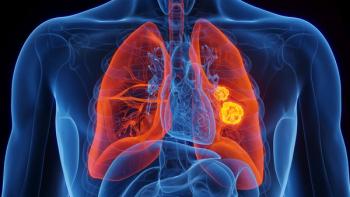
Peanut Protein Therapy Provides Safe and Effective Treatment for Peanut-Allergic Children
Peanut sublingual immunotherapy offers a practical treatment option for peanut-allergic toddlers, reducing symptoms in 80% of children.
Sublingual immunotherapy (SLIT) was reported to be a safe in peanut-allergic children that are 1 to 4 years old, with a high chance of desensitization and remission with earlier treatment, according to research published in the Journal of Allergy and Clinical Immunology.
The clinical trial extended over 3 years and was led by Edwin Kim, MD, associate professor of pediatrics at the University of North Carolina School of Medicine. The trial assessed the efficacy and feasibility of SLIT, marking it as the first randomized, controlled trial among this age group.
The role of SLIT includes administering a small amount of peanut protein to be absorbed under the tongue, rather than peanut flour that is combined with other foods and consumed during oral immunotherapy (OIT).
The study included 50 children aged 1 to 4 years old that had a peanut allergy. The children were randomly assigned to receive 4 mg of peanut SLIT, compared to a placebo—25 received peanut SLIT and 25 received placebo. Desensitization to peanut was examined by a double-blind, placebo-controlled food challenge (DBPCFC) after 3 years of being treated with SLIT.
“From our prior studies in older children, we were optimistic that peanut SLIT could have a similar treatment effect in toddlers,” said Kim, in a press release. “However, what we found was even better. The desensitization levels we saw were higher than expected and on par with levels we normally would only expect with oral immunotherapy. Just as important, rather than wearing off quickly, we were excited to see that over 60% stayed protected 3 months after stopping the treatment.”
The results showed that 80% of peanut-allergic toddlers tolerated 15 peanuts without experiencing allergic symptoms after treatment, according to study authors. The researchers also found that among the treated toddlers, 63% remained protected from peanut allergy symptoms for a 3-month period. The press release noted that this deemed SLIT as an effective treatment, as the typical reaction to a peanut allergy is caused by 1 peanut or less.
Kim said in a press release that SLIT is a safer option than OIT because it had better overall safety and more simple administration. Treatment adverse effects with OIT included mild to moderate and severe reactions that need emergency treatment, whereas adverse effects with SLIT included oral itching.
“Peanut OIT is currently available and being offered by increasing numbers of allergists, however we are quickly learning that in addition to its known risk of allergic reactions, the actual doing of OIT can be very difficult for many families,” said Kim, in a press release. “Peanut SLIT could be a good option to consider as it may be able to provide comparable levels of protection while being safe and easier to administer.”
The press release noted that researchers are hopeful that SLIT could provide life-changing results for families, being a practical option to treat allergic reactions.
“Even with the push to introduce peanut in early childhood in order to prevent the allergy, peanut allergy remains one of the most common food allergies,” said Kim, in a press release. “A result of early peanut introduction is that we are diagnosing peanut allergy at younger and younger ages making it vitally important to develop treatments that can be safe and effective at preventing allergic reactions in these young children.”
Reference
For toddlers allergic to peanuts, a tiny bit of protein therapy under the tongue could be the best approach. EurekAlert!. News release.
Newsletter
Stay informed on drug updates, treatment guidelines, and pharmacy practice trends—subscribe to Pharmacy Times for weekly clinical insights.
















































































































































































































